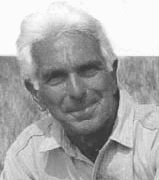Transforming Anger and Hate
 With 20 plus years of work with angry individuals, in a variety of settings such as prisons, domestic violence programs, school rooms, universities, and in private practice, I have found that the strategies which are most effective for transforming raging behaviors are rarely discovered without professional help. Unfortunately, mainstream therapy also misses the boat on occasion, employing the same general strategy as the unstudied amateur.
With 20 plus years of work with angry individuals, in a variety of settings such as prisons, domestic violence programs, school rooms, universities, and in private practice, I have found that the strategies which are most effective for transforming raging behaviors are rarely discovered without professional help. Unfortunately, mainstream therapy also misses the boat on occasion, employing the same general strategy as the unstudied amateur.
The natural reaction to a problematic emotion, such as anger, is to try and control it through suppression. Most make a conscious decision to never again get so angry, repeatedly. Though the strategy may work for a short while, there is always a blowup, followed by increased self-loathing or desperate attempts at ego preservation using denial and blame. The person might say to himself, “I would not have this problem if you would not make me so angry.”
Even therapists make the mistake of attempting to suppress the client’s anger, teaching new ways of thinking, so that anger is not aroused. Many clinicians turn to CBT techniques based on the false assumption that anger is postcognitive. However, as those who struggle with anger will tell you, in most cases, anger takes control before there is time to think. That is why emotions must be transformed using new emotional energy, rather than relying on cognition.
Lasting transformations are achieved when there is a slight shift in emphasis, from emotional contraction to emotional expansion. In other words, rather than seeking not to feel a certain emotion, it is important to learn how to proactively select which emotions to seek. This adjustment will impact both the behaviors and the thoughts that the person can access. Even more importantly, there are key emotions which tend to balance or even exclude feelings of rage and anger. When proficiency is acquired in these new emotions, the changes in the client seem almost miraculous.
To the best of my knowledge, the three most import emotions for an angry-raging person to practice are remorse, compassion, and forgiveness. Some individuals come to therapy knowing only two emotional states: anger and triumph. I have found that even those who seek to suppress all emotions occasionally explode with these two. Other individuals, who have a larger emotional repertoire, may feel compassion or remorse on occasion, but it occurs at random, without the benefit of intent.
When I am seeking to teach a new feeling state, often I am asked, “But how do I start to feel that way?” The short answer is, “You make a conscious choice. You decide in advance to have a new emotional reaction.” The longer answer is that this requires practice and help, from someone who is more emotionally fluid. Another strategy that is helpful is to know what thoughts to think while attempting to summon a particular emotion.
One thought that seems to help generate remorse is, “I made a mistake when I …” A thought that seems to summon compassion is, “The other person probably felt …” And for forgiveness, ideas such as, “I would like to make things better by …” can really help. If this sounds like cognitive therapy, it should be noted that there is another important shift in emphasis. Rather than assuming one only has the power to choose thoughts, the act of self-determination is expanded to the idea that one has the responsibility to choose his or her emotions as well. Rather than not feeling anger, the individual decides to balance anger with feelings of remorse, and compassion, and forgiveness.
One last point, if you are an angry individual, and you are wondering how you are going to be able to feel more compassion for others, know that it will not happen until you learn to feel the same compassion for yourself. Similarly, you will not be good at forgiving others until you learn to forgive yourself (which means you have to first get honest with yourself about the mistakes you have made and how those mistake have effected others). The road to happy relations with others is a circle rather than a line. What we send out to others, comes back to us. And, what we create within ourselves ultimately determines what we have available to share with others.

 BOL: I hope our conversation will focus on the how-to of intervening in order to enhance the performance of organizations. You are a master of that art, but your most important work has focussed elsewhere: on understanding the nature of the organization,...
BOL: I hope our conversation will focus on the how-to of intervening in order to enhance the performance of organizations. You are a master of that art, but your most important work has focussed elsewhere: on understanding the nature of the organization,...  BOL: Alfred Adler’s name is better known to today’s therapists than are his ideas and methods. Your dedication to this body of work must be based on the belief that contemporary practice is diminished because Adler’s contributions are not...
BOL: Alfred Adler’s name is better known to today’s therapists than are his ideas and methods. Your dedication to this body of work must be based on the belief that contemporary practice is diminished because Adler’s contributions are not...